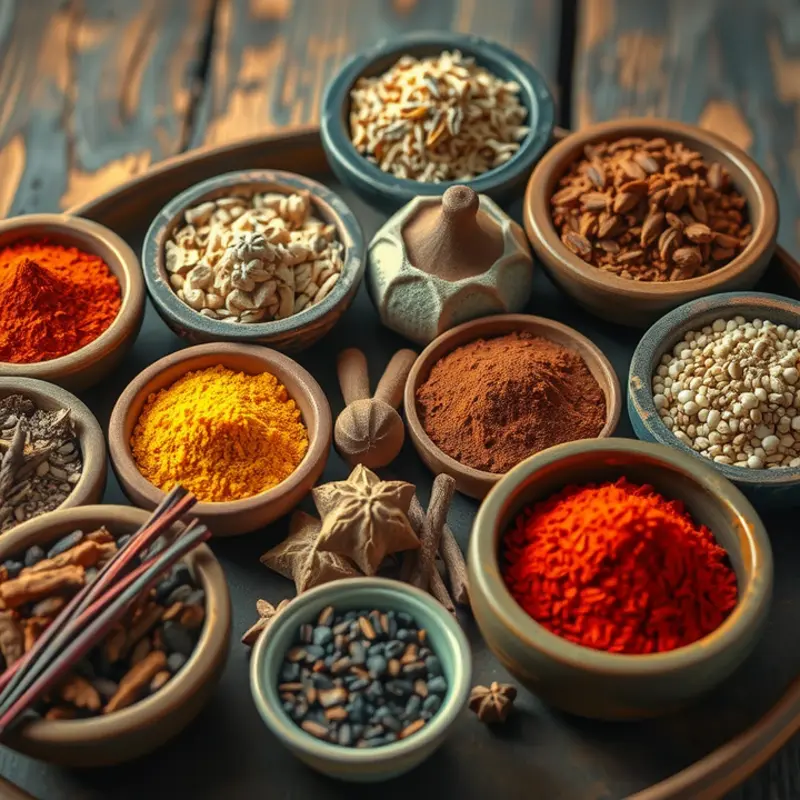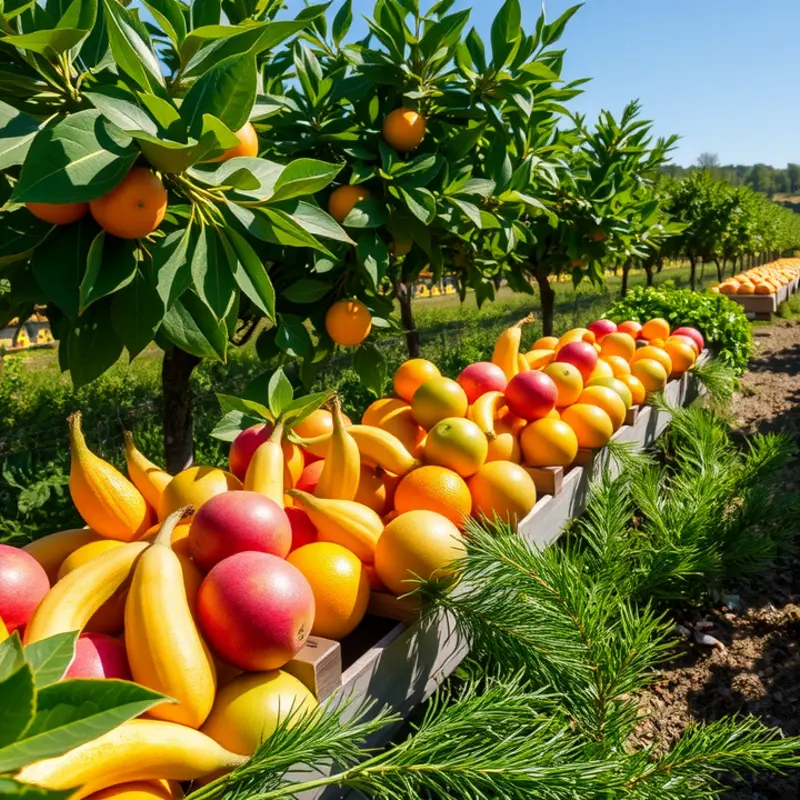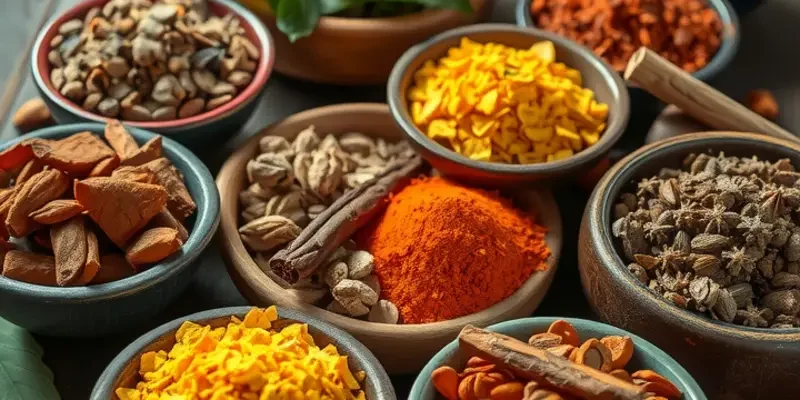Food holds the power to connect people, cultures, and stories. Across the globe, unique culinary ingredients bring life to traditional dishes, revealing rich histories and diverse practices. This exploration highlights exceptional elements used in cooking that not only tantalize taste buds but also provoke curiosity, encouraging a deeper appreciation for global flavors.
The Wonders of Indigenous Spices

Szechuan peppercorns offer more than just a fiery kick to dishes; they impart a unique tingling sensation and a citrusy aroma. Native to China’s Sichuan province, these peppercorns have been elevating local cuisine for centuries. Used in the famous Szechuan hot pot and many other regional dishes, they are integral to balancing flavors and enhancing the experience of umami.
Moving westward to Africa, we encounter the vibrant berbere spice—a key element in Ethiopian cuisine. This fiery blend combines chili peppers with warm spices like cinnamon, cumin, and cloves, resulting in a complex layering of flavors. Berbere is more than just a spice; it’s a tradition. It’s used in everything from stews to lentil dishes, providing an aromatic and spicy foundation that fills kitchens with its rich scent.
In North Africa, ras el hanout emerges as a staple in Moroccan cooking. Literally meaning ‘head of the shop,’ this spice mix is known for its intricate blend. It can contain up to 30 ingredients, including cardamom, clove, cinnamon, and dried rosebuds. Each shop or family has its own secret recipe, making each version distinct. Ras el hanout is often used in tagines, lending these slow-cooked stews a depth of flavor that is both sweet and savory.
Understanding the regional cooking techniques that accompany these spices is essential to their appreciation. For instance, the art of blending spices varies significantly. Szechuan cuisine often employs dry-roasting to release the essential oils of peppercorns before they are ground into powders. In contrast, the process of making berbere involves a careful balance of toasting and grinding, giving it dynamic heat and aroma. Moroccan ras el hanout requires meticulous mixing to ensure the spices harmonize without overshadowing each other.
The influence of trade routes on spice distribution shaped how these flavors spread and evolved as they reached new lands. This historical intermingling can be explored further in culinary influences from trade, which explains the diffusion of spices across global cuisines.
Indigenous spices, through their unique compositions and histories, contribute to a tapestry of flavors that offer both complexity and balance. They connect regions with their pasts and create a continuous thread in the ever-changing tapestry of culinary art. Whether subtly transforming a dish or leaving a lingering impression, these spices are treasured not only for taste but for the stories they carry.
Exotic Fruits and Vegetables Around the Globe

Embarking on the journey of discovering exotic fruits and vegetables is akin to exploring uncharted territories filled with vibrant colors, diverse textures, and complex flavors. These unique ingredients not only enhance the nutritional landscape but also inspire culinary creativity across the globe.
In South Asia, the colossal jackfruit stands as a testament to nature’s bounty. This versatile fruit is celebrated for its robust nutritional profile. Rich in vitamin C, fiber, and potassium, jackfruit is hailed in traditional dishes like ‘Kathal Biryani’ of India, where its meaty texture substitutes for seafood or meat. Its subtle sweetness also makes it adaptable to Western dishes like tacos and sandwiches.
In Europe, particularly Germany, the humble kohlrabi—sometimes dubbed the ‘German turnip’—is a culinary staple. Resembling a cross between a cabbage and a turnip, it offers a crisp texture and mild, peppery flavor. Kohlrabi is often thinly sliced into salads or roasted to bring out its inherent sweetness. One popular way it is consumed is in a cream-based soup, ‘Kohlrabisuppe’, where it lends its unique fragrance and creaminess.
Shift your gaze to Southeast Asia, where the tropical mangosteen enchants with its sweet, tangy flavor. Known as the ‘Queen of Fruits,’ mangosteen is cherished for its juicy segments that deliver a unique blend of tartness and sweetness. Though often eaten fresh, mangosteen finds its way into refreshing sorbets and beverages that tantalize the taste buds.
The vibrant purple yam, or ‘ube,’ is a staple in Filipino cuisine, renowned for its vivid hue and sweet, nutty flavor. Used primarily in desserts, such as the decadent ‘ube halaya’, it showcases this ingredient’s versatility. Beyond their eye-catching color, purple yams are rich in antioxidants, contributing to their revered status as a superfood.
Travel to Oceania, where the unique feijoa, or ‘pineapple guava,’ routines dietary plans with its aromatic scent and tropical taste. Commonly enjoyed raw, feijoa embodies the freshness of its New Zealand habitat. Cooks frequently incorporate it into jellies and desserts, which enhance a meal’s overall brightness.
These exotic offerings highlight how people harness the power of local ingredients to create distinctive culinary traditions. Celebrations, like India’s vibrant harvest festivals, often feature jackfruit in an array of delectable dishes that reflect the season’s bounty. Such traditions emphasize the importance of incorporating local produce into daily life, reducing environmental footprints, and promoting healthier eating habits.
For those curious about exploring beyond the familiar, these fruits and vegetables illustrate how diverse factors like climate, geography, and culture influence what communities grow and consume. They serve as a vibrant demonstration of how traditional recipes evolve, driven by both necessity and imagination, ensuring the preservation and celebration of cultural heritage.
By embracing these ingredients in our own kitchens, we not only diversify our culinary repertoire but also partake in a global tradition of sustainable and meaningful eating. Those interested in further enhancing flavors without overwhelming dishes may find additional insights in guides focused on flavor boosters, such as this one, which pairs well with the introduction of exotic produce into everyday meals.
Final words
Unique culinary ingredients serve as gateways into the diverse cultures and histories of the world. Whether it’s the intricate relationships built around indigenous spices or the creative uses of exotic fruits and vegetables, these elements shape the essence of global cuisine. By incorporating such ingredients, foodies and culturally-curious enthusiasts can explore a more profound connection to their culinary experiences, encouraging a journey through flavors, traditions, and stories that span the globe.








